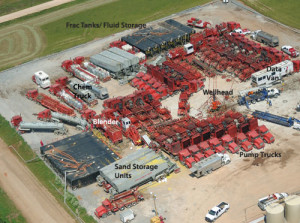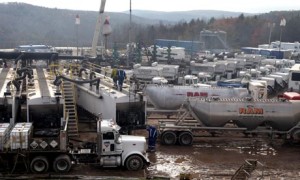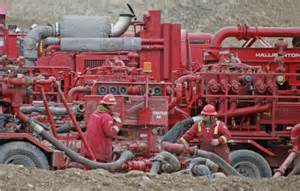 On September 20, 2013, California Governor Jerry Brown signed into law SB4, enacting a comprehensive framework for regulating well stimulation, including hydraulic fracturing (“fracking”), of oil and gas wells. SB4 requires the Department of Conservation (“DoC”) to implement the law by adopting permanent regulations to go into effect by January 1, 2015. SB4 also authorized the DoC to adopt interim regulations, which it has now done. The interim regulations will become effective January 2, 2014 and will remain in effect until the permanent regulations are adopted and become effective. They will be administered by the DoC’s Division of Oil, Gas and Geothermal Resources (“DOGGR”).
On September 20, 2013, California Governor Jerry Brown signed into law SB4, enacting a comprehensive framework for regulating well stimulation, including hydraulic fracturing (“fracking”), of oil and gas wells. SB4 requires the Department of Conservation (“DoC”) to implement the law by adopting permanent regulations to go into effect by January 1, 2015. SB4 also authorized the DoC to adopt interim regulations, which it has now done. The interim regulations will become effective January 2, 2014 and will remain in effect until the permanent regulations are adopted and become effective. They will be administered by the DoC’s Division of Oil, Gas and Geothermal Resources (“DOGGR”).
California Fracking Regulations: Overview of the Interim Regulations
Fracking and Other Types of Well Stimulation Covered by the California Regulations
The interim regulations cover “well stimulation treatment,” defined broadly as:
“[A] treatment of a well designed to enhance oil and gas production or recovery by increasing the permeability of the formation. Well stimulation is a short term and non-continual process for the purposes of opening and stimulating channels for the flow of hydrocarbons. Examples of well stimulation treatments include hydraulic fracturing, acid fracturing, and acid matrix stimulation. Well stimulation treatment does not include routine well cleanout work; routine well maintenance; routine treatment for the purpose of removal of formation damage due to drilling; bottom hole pressure surveys; routine activities that do not affect the integrity of the well or the formation; the removal of scale or precipitate from the perforations, casing, or tubing; or a treatment that does not penetrate into the formation more than 36 inches from the wellbore.”
Required Filings and Certifications of Well Integrity
The interim regulations requires an operator to certify, before commencing a well stimulation operation, that:
- The well’s casing is sufficiently cemented in order to effectively control the well at all times during well stimulation treatment;
- All potentially productive zones, zones capable of over-pressurizing the surface casing annulus, or corrosive zones are isolated and sealed to prevent vertical migration of fluids or gases behind the casing; and
- The wellbore’s mechanical integrity is tested and maintained and all cemented casing strings and all tubing strings to be utilized in the well stimulation treatment operations will be pressure tested.
Before commencing a well stimulation activity, the operator must submit a Well Stimulation Treatment (“WST”) Notice to the DOGGR. Well stimulation may not commence until the WST Notice, the certifications and all other required information have been filed and DOGGR has reviewed and determined them to be complete.
Advance Notice
Once the DOGGR has cleared the WST Notice, the operator must give at least 72 hours advance notice before commencing stimulation treatment so that the DOGGR may witness the procedure.
 Notice to Neighbors
Notice to Neighbors
The operator is required hire an independent consultant to notify all surface property owners and tenants whose land is situated within a 1500 foot radius of the wellhead of the well to be stimulated, or within 500 feet of the horizontal projection of the subsurface parts of the well to be stimulated:
- A copy of the well stimulation treatment permit;
- Notice of the availability for water sampling and testing of any water well suitable for drinking or irrigation purposes; and
- Notice of the availability for water sampling and testing of any surface water suitable for drinking or irrigation purposes.
Pressure Testing And Other pre-Stimulation Requirements
Prior to commencing a well stimulation treatment, the operator must pressure-test the equipment to be used. At least 48 hours before commencement, the operator must run a cement bond log or take other specified action to insure the casing cement’s integrity. The operator must also conduct a well stimulation treatment radius analysis to ensure the geologic and hydrologic isolation of the oil and gas formation during and following the well stimulation treatment.
Monitoring Requirements
The Interim Regulations provide detailed requirements for the operator to monitor the wells during and after completion of the well stimulation procedure.
 Post-Stimulation Disclosure
Post-Stimulation Disclosure
Within 60 days following the cessation of the well stimulation activities, the operator must post to an Internet-based Chemical Disclosure Registry that is accessible to the public, specified information regarding the composition and disposition of the well stimulation fluids, including, but not limited to, hydraulic fracturing fluids, acid well stimulation fluids, and flow-back fluids.
Trade Secrets
An operator may apply to the DOGGR to withhold from postings to the Chemical Disclosure Registry the composition of fracking fluids and other trade secrets. However, trade secret protection does not negate the requirement to disclose the composition of fracking fluids to the DOGGR.
Storage and Treatment of Fracking and other Well Stimulation Fluids
The interim regulations govern the treatment and storage of fracking and other stimulation fluids and of produced water form a stimulation procedure. The fluids must be accounted for in the operator’s Spill Contingency Plan filed with the DOGGR.
Resources
The DOGGR has made available the following resources regarding the interim California Fracking Regulations and other information related to fracking and well stimulation:

